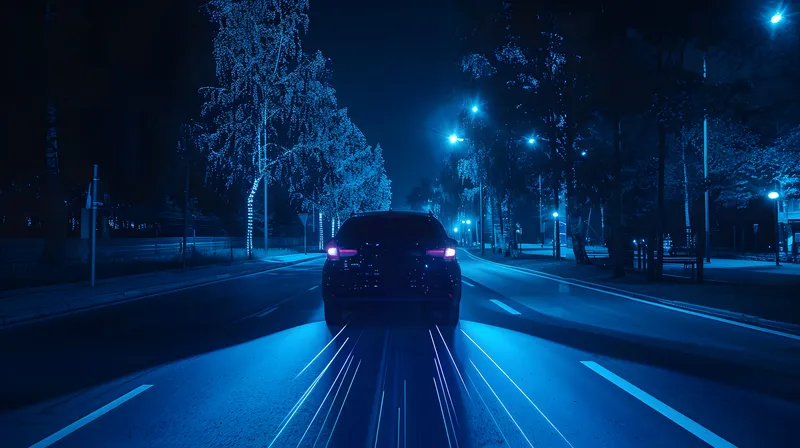The trailer telematics market is fast developing into a major growth engine for the commercial vehicles telematics market in Europe. Immense opportunities await telematics vendors as a majority of the trailer population in Europe (as well as North America) remains underpenetrated. Within the trailer telematics market, trailer location and tracking is the most developed application. However, security concerns and the need for effective mobile asset monitoring and management are creating several new applicati
July 2, 2012
Read time: 3 mins
RSSThe trailer telematics market is fast developing into a major growth engine for the commercial vehicles telematics market in Europe. Immense opportunities await telematics vendors as a majority of the trailer population in Europe (as well as North America) remains underpenetrated.
Within the trailer telematics market, trailer location and tracking is the most developed application. However, security concerns and the need for effective mobile asset monitoring and management are creating several new applications that are positioned in the growth development phase. The cost of trailer telematics hardware is declining, and fleets and leasing companies, along with their customers, are realising the benefits of several emerging telematics solutions.
New analysis from Frost & Sullivan, Strategic Analysis of the European Trailer Telematics Market, finds that the potential size of the market is vast and not fully penetrated; less than five per cent in a pool of approximately 2.3 million trailers. However, this is estimated to rise to 18.2 per cent in a pool of nearly 3.1 million trailers in 2017. The research examines the penetration of telematics in trailers, especially in reefer, dry box, tanker, curtain sider and flatbed trailers.
“Consolidation, horizontal collaboration and joint ventures among logistics operators is expected to increase the need for an integrated supply chain solutions provider providing end-to-end asset visibility,” notes Frost & Sullivan senior research analyst Niranjan Manohar.
To stay in business and survive competition, fleets must maximise efficiency in all aspects of their operations. Fleets are becoming aware of the tremendous productivity maximisation benefits that trailer telematics can offer to their day-to-day operations, thereby reducing costs.
As trailers are an integral part of freight movement, enhancing elements such as productivity, security, and utilisation of these mobile assets that haul the bulk of industrial and consumer goods in Europe, is emerging as a key issue.
“As the fleets’ and leasing companies’ operations get increasingly interfaced with that of their customers, the need for effective trailer tracking for productivity improvement is more critical now than ever before,” explains Manohar.
Efforts are being made to standardise enabling technologies and to absorb steady price declines, without compromising on profitability. In the medium-term, price-sensitiveness of the market is expected to ensure a future where price declines in both hardware and services market will be evident.
“Aftermarket vendors are re-thinking their strategies and have decided to form partnerships with other trailer telematics vendors to market and test their respective low- to high-end trailer solutions, allowing them to gauge and understand the industry know how’s,” remarks Manohar.
Ultimately, telematics vendors offering services that are reliable and superior in quality are expected to be the most sought after. Participants will need to provide the right product and service mix to strengthen their value proposition.
Within the trailer telematics market, trailer location and tracking is the most developed application. However, security concerns and the need for effective mobile asset monitoring and management are creating several new applications that are positioned in the growth development phase. The cost of trailer telematics hardware is declining, and fleets and leasing companies, along with their customers, are realising the benefits of several emerging telematics solutions.
New analysis from Frost & Sullivan, Strategic Analysis of the European Trailer Telematics Market, finds that the potential size of the market is vast and not fully penetrated; less than five per cent in a pool of approximately 2.3 million trailers. However, this is estimated to rise to 18.2 per cent in a pool of nearly 3.1 million trailers in 2017. The research examines the penetration of telematics in trailers, especially in reefer, dry box, tanker, curtain sider and flatbed trailers.
“Consolidation, horizontal collaboration and joint ventures among logistics operators is expected to increase the need for an integrated supply chain solutions provider providing end-to-end asset visibility,” notes Frost & Sullivan senior research analyst Niranjan Manohar.
To stay in business and survive competition, fleets must maximise efficiency in all aspects of their operations. Fleets are becoming aware of the tremendous productivity maximisation benefits that trailer telematics can offer to their day-to-day operations, thereby reducing costs.
As trailers are an integral part of freight movement, enhancing elements such as productivity, security, and utilisation of these mobile assets that haul the bulk of industrial and consumer goods in Europe, is emerging as a key issue.
“As the fleets’ and leasing companies’ operations get increasingly interfaced with that of their customers, the need for effective trailer tracking for productivity improvement is more critical now than ever before,” explains Manohar.
Efforts are being made to standardise enabling technologies and to absorb steady price declines, without compromising on profitability. In the medium-term, price-sensitiveness of the market is expected to ensure a future where price declines in both hardware and services market will be evident.
“Aftermarket vendors are re-thinking their strategies and have decided to form partnerships with other trailer telematics vendors to market and test their respective low- to high-end trailer solutions, allowing them to gauge and understand the industry know how’s,” remarks Manohar.
Ultimately, telematics vendors offering services that are reliable and superior in quality are expected to be the most sought after. Participants will need to provide the right product and service mix to strengthen their value proposition.









